NBA History
HISTORY: National Bar Association
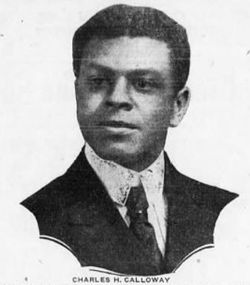 The National Bar Association was founded when segregation and discrimination based on race were permissible under the law, including the “separate but equal” jurisprudence of Plessy v. Ferguson (1896). There was no effective organization of lawyers promoting equal justice under the law and protecting Black Americans’ human and civil rights.
The National Bar Association was founded when segregation and discrimination based on race were permissible under the law, including the “separate but equal” jurisprudence of Plessy v. Ferguson (1896). There was no effective organization of lawyers promoting equal justice under the law and protecting Black Americans’ human and civil rights.
Because Black lawyers were excluded from membership in the American Bar Association (“ABA”) and most local majority bar associations across the country, 12 black lawyers met in Des Moines, Iowa, on August 1, 1925, to spearhead the establishment of a national network of black lawyers committed to the pursuit of equal justice under law. They founded the National Bar Association.
These 12 NBA founders were George H. Woodson, S. Joe Brown, Gertrude E. Rush, James B. Morris, Charles P. Howard, Sr., Wendell E. Green, C. Francis Stradford, Jesse N. Baker, William H. Haynes, George C. Adams, Charles H. Calloway, and L. Amasa Knox.
The purpose of the NBA, as stated in its articles of incorporation, was to “advance the science of jurisprudence, uphold the honor of the legal profession, promote social intercourse among the members of the American Bar, and protect the civil and political rights of all citizens of the several states and the United States.”
Black lawyers affiliated with the NBA became the legal voices and advocates for Black people in the courts and other forums.
Leaders and members of the NBA took this nation from the Jim Crow jurisprudence of Plessy v. Ferguson to landmark cases such as Chambers v Florida (1940) (criminal justice), Smith v. Allwright (1944) (voting), Morgan v. Virginia (1946) (transportation), Shelley v. Kraemer (1948) (housing), Sweatt v. Painter (1950) (college admissions), Brown v. Board of Education (1954) (public schools), and Gomillion v. Lightfoot (1960) (racial gerrymandering).
The work of the National Bar Association and its members provided the underpinnings for major civil rights legislation, such as the Civil Rights Act of 1964, the Voting Rights Act of 1965, and the Fair Housing Act of 1968.
Today, the National Bar Association is the nation’s oldest and largest national association of predominantly African-American lawyers, judges, law professors, and law students, with a network of over 67,000. The NBA has over 80 chapters throughout the United States and has affiliations with lawyer organizations in Canada, the United Kingdom, Africa, Morocco, and the Caribbean.
Courtesy of: Robert L. Bell, Life Member and Chair
NBA Centennial History Committee
HISTORICAL TIMELINE: “America’s Legal Conscience”
’20s
Founding and Incorporation
1925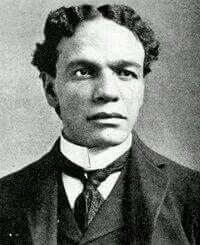 The National Bar Association was founded out of the Greenville Movement and the Convention of the Iowa Colored Bar Association. During the first quarter of the 20th century, 12 African-American pioneers with a mutual interest in, and dedication to, justice and civil rights for all, helped structure the struggle of the African-American race in America. On August 1, the National Bar Association was incorporated in Des Moines.
The National Bar Association was founded out of the Greenville Movement and the Convention of the Iowa Colored Bar Association. During the first quarter of the 20th century, 12 African-American pioneers with a mutual interest in, and dedication to, justice and civil rights for all, helped structure the struggle of the African-American race in America. On August 1, the National Bar Association was incorporated in Des Moines.
The “Negro Bar Association” later called the National Bar Association was founded after some of the National Bar Association founders were denied membership in the American Bar Association. (Note: In 1911, William Henry Lewis became the first black lawyer admitted to The American Bar Association.)
’30s
Facing the Struggle
1930The National Bar Association was concerned about private and municipal law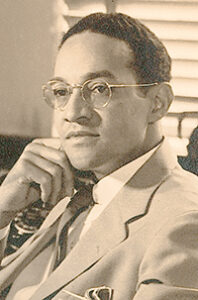 libraries excluding black lawyers from their premises because of race. Throughout the decade, Mrs. Sadie Tanner Mosell Alexander and her husband, Raymond Pace Alexander, initiated legal fights that began to open up restaurants, hotels, and movie theaters to blacks in Philadelphia.
libraries excluding black lawyers from their premises because of race. Throughout the decade, Mrs. Sadie Tanner Mosell Alexander and her husband, Raymond Pace Alexander, initiated legal fights that began to open up restaurants, hotels, and movie theaters to blacks in Philadelphia.
1935Howard Law Dean and scholar Charles Hamilton Houston was also counsel to the NAACP. With his protégée Thurgood Marshall (who would later become a member), Houston began challenging Jim Crow in education with a successful challenge to racial segregation at the University of Maryland School of Law. They moved through the South, challenging Jim Crow in graduate schools and law schools before ending up where they always wanted to be: in the United States Supreme Court with a dream team of lawyers arguing that segregation in K-12 education violates the United States Constitution.
1937The late William Henry Hastie was appointed the nation’s first black federal judge.
’40s
Membership Grows
1940The NBA attempted to establish “free legal clinics in all cities with a colored population of 5,000 or more.” Legal clinics, established in 12 states, were managed by a group of black lawyers. Contemporary poverty law and legal clinics can be traced to the legal aid movement initiated by the NBA. 1941 – Raymond Pace Alexander founded the National Bar Journal, which became a platform for black lawyers to challenge legal principles contrary to the interests of black Americans
1945There were nearly 250 members representing 25 percent of the African-American members of the bar.
1947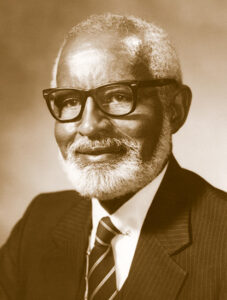 The Rev. W. Harold Flowers, founder and former president of the National Bar Association, defended two black men who had been charged with first-degree murder in the deaths of two white men. His motion to quash the entire jury because there had been no black jurors in nearly 50 years led to the placement of 13 blacks on the prospective jurors’ panel, with three eventually seated on the jury. The defendants were found guilty of lesser charges, marking the first time in Arkansas that a black man had not gone to the electric chair upon conviction in the death of a white man.
The Rev. W. Harold Flowers, founder and former president of the National Bar Association, defended two black men who had been charged with first-degree murder in the deaths of two white men. His motion to quash the entire jury because there had been no black jurors in nearly 50 years led to the placement of 13 blacks on the prospective jurors’ panel, with three eventually seated on the jury. The defendants were found guilty of lesser charges, marking the first time in Arkansas that a black man had not gone to the electric chair upon conviction in the death of a white man.
’50s
The Fight for Education
1950Sweatt v. Painter ~ Encouraged by their victory in Gaines’ case, the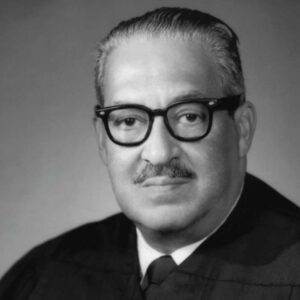 NAACP continued to attack legally sanctioned racial discrimination in higher education. In 1946, an African American named Heman Sweatt applied to the University of Texas Law School. Hoping that it would not have to admit Sweatt to the “white” law school if a “Black” school already existed, elsewhere on the University’s campus, the state hastily set up an underfunded “Black” law school. At this point, Sweatt employed the services of Thurgood Marshall and the NAACP Legal Defense and Education Fund and sued to be admitted to the University’s “white” law school. He argued that the education he received in the “Black” law school was not of the same academic caliber as the one he would receive if he attended the “white” law school. When the case reached the U.S. Supreme Court in 1950, the Court unanimously agreed with him, citing the blatant inequalities between the University’s law school (the school for whites) and the hastily erected school for Blacks and that the “Black” law school was “separate” but not “equal.” Like the Murray case, the Court found the only appropriate remedy for this situation was to admit Sweatt to the University’s law school.
NAACP continued to attack legally sanctioned racial discrimination in higher education. In 1946, an African American named Heman Sweatt applied to the University of Texas Law School. Hoping that it would not have to admit Sweatt to the “white” law school if a “Black” school already existed, elsewhere on the University’s campus, the state hastily set up an underfunded “Black” law school. At this point, Sweatt employed the services of Thurgood Marshall and the NAACP Legal Defense and Education Fund and sued to be admitted to the University’s “white” law school. He argued that the education he received in the “Black” law school was not of the same academic caliber as the one he would receive if he attended the “white” law school. When the case reached the U.S. Supreme Court in 1950, the Court unanimously agreed with him, citing the blatant inequalities between the University’s law school (the school for whites) and the hastily erected school for Blacks and that the “Black” law school was “separate” but not “equal.” Like the Murray case, the Court found the only appropriate remedy for this situation was to admit Sweatt to the University’s law school.
1954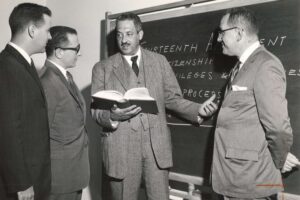 Brown v. Board of Education ~ The case that came to be known as Brown v. Board of Education was the name given to five separate cases that were heard by the U.S. Supreme Court concerning the issue of segregation in public schools. These cases were Brown v. Board of Education of Topeka, Briggs v. Elliot, Davis v. Board of Education of Prince Edward County (VA.), Boiling v. Sharpe, and Gebhart v. Ethel. While the facts of each case are different, the main issue in each was the constitutionality of state-sponsored segregation in public schools. Once again, Thurgood Marshall and the NAACP Legal Defense and Education Fund handled these cases. When the cases came before the Supreme Court in 1952, the Court consolidated all five cases under the name of Brown v. Board of Education. Meeting to decide the case, the Justices of the Supreme Court realized that they were deeply divided over the issues raised. While most wanted to reverse Plessy and declare segregation in public schools to be unconstitutional, they had various reasons for doing so. Unable to come to a solution by June 1953 (the end of the Court’s 1952-1953 term), the Court decided to rehear the case in December 1953. During the intervening months, however, Chief Justice Fred Vinson died and was replaced by Gov. Earl Warren of California. After the case was reheard in 1953, Chief Justice Warren was able to do something that his predecessor had not — i.e. bring all of the Justices to agree to support a unanimous decision declaring segregation in public schools unconstitutional. On May 14, 1954, he delivered the opinion of the Court, stating that “We conclude that in the field of public education the doctrine of ‘separate but equal has no place. Separate educational facilities are inherently unequal. . .”
Brown v. Board of Education ~ The case that came to be known as Brown v. Board of Education was the name given to five separate cases that were heard by the U.S. Supreme Court concerning the issue of segregation in public schools. These cases were Brown v. Board of Education of Topeka, Briggs v. Elliot, Davis v. Board of Education of Prince Edward County (VA.), Boiling v. Sharpe, and Gebhart v. Ethel. While the facts of each case are different, the main issue in each was the constitutionality of state-sponsored segregation in public schools. Once again, Thurgood Marshall and the NAACP Legal Defense and Education Fund handled these cases. When the cases came before the Supreme Court in 1952, the Court consolidated all five cases under the name of Brown v. Board of Education. Meeting to decide the case, the Justices of the Supreme Court realized that they were deeply divided over the issues raised. While most wanted to reverse Plessy and declare segregation in public schools to be unconstitutional, they had various reasons for doing so. Unable to come to a solution by June 1953 (the end of the Court’s 1952-1953 term), the Court decided to rehear the case in December 1953. During the intervening months, however, Chief Justice Fred Vinson died and was replaced by Gov. Earl Warren of California. After the case was reheard in 1953, Chief Justice Warren was able to do something that his predecessor had not — i.e. bring all of the Justices to agree to support a unanimous decision declaring segregation in public schools unconstitutional. On May 14, 1954, he delivered the opinion of the Court, stating that “We conclude that in the field of public education the doctrine of ‘separate but equal has no place. Separate educational facilities are inherently unequal. . .”
’60s
Defining Decade
1960
NBA Journal and News was established and focused on news and pictures of the 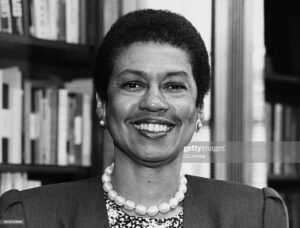 membership and the business meetings of the NBA. (Eventually replaced by the NBA Bulletin) 1963 – March on Washington for Jobs & Freedom, MLK’s “I Have a Dream” Speech
membership and the business meetings of the NBA. (Eventually replaced by the NBA Bulletin) 1963 – March on Washington for Jobs & Freedom, MLK’s “I Have a Dream” Speech
1965Voting Rights Act signed
1968On December, 17 black lawyers, dissatisfied with the direction of the NBA established the National Conference of Black Lawyers (NCBL).
’70s
Affirmative Action
1971Flowers was ordained as a Methodist minister in 1971.
1972The Women’s Division of the NBA was approved in October.
1972During the 46th Annual NBA Convention in Atlanta, the NBA tried to organize a student division. The effort failed, but today there is a growing number of law student members.
1977Flowers was the first black named a special circuit judge for Jefferson County.
1978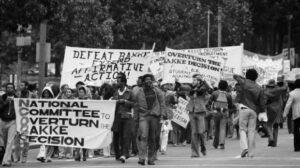 Proved to be the “Year of Affirmative Action.” In the wake of Bakke v. Regents of the University of California, the organization addressed pressing issues laid bare by this momentous decision.
Proved to be the “Year of Affirmative Action.” In the wake of Bakke v. Regents of the University of California, the organization addressed pressing issues laid bare by this momentous decision.
’80s
A Permanent Home
1940The NBA attempted to establish “free legal clinics in all cities with a colored population of 5,000 or more.” Legal clinics, established in 12 states,
1980Former U.S. President, then-Gov. Bill Clinton appointed the Rev. Flowers as an associate justice of the state Court of Appeals. 1981 – The bar year commenced on a historical note: Arnette R. Hubbard assumed leadership, making her the first woman president of a major bar association.
1981In March, the first NBA Legislative Conference was held.
1982In May, the NBA named its mid-year dinner in honor of Gertrude E. Rush, the organization’s only woman co-founder.
1984The NBA purchased its official headquarters at 1225 11th Street NW, Washington, DC.
1986The NBA Hall of Fame was inaugurated by then-President Fred D. Gray, Sr. to honor those lawyers who have been licensed to practice for 40 years or more and who have made a significant contribution to the cause of justice.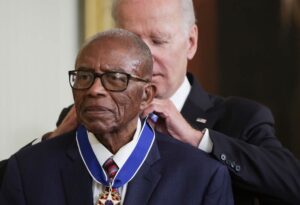
1988The first black U.S. Supreme Court Justice Thurgood Marshall addressed the NBA at its annual convention in August.
1989Mrs. Alexander, a lawyer and civil rights advocate who achieved many firsts as a black woman, died at 91. Mrs. Alexander was the first black woman to earn a doctorate at the University of Pennsylvania – and the first nationwide to earn a doctorate in economics. She was the first black woman to graduate from Penn’s Law School, and then the first admitted to legal practice in Pennsylvania.
’90s
End of an Era
1992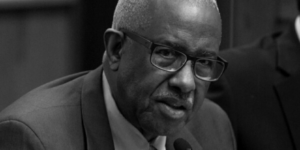 The NBA submitted comments to the proposed “incubator” program described by the Federal Communications Commission (FCC) in its Memorandum Opinion and Order and Further Notice of Proposed Rule Making, FCC 92-361, released September 4, 1992. In that same year, comments were also submitted in response to the Notice of Proposal Policy Guidance issued by the United States Department of Education and published in the Federal Register on December 1, 1991. 1995 – The Million Man March, also known as the Holy Day of Atonement, took place on October 16 in Washington, DC. The call to organize one million black men to stand up for their families, and communities and to atone with one another came from the Honorable Minister Louis Farrakhan. Although Hon. Min. Farrakhan called for one million men, and more than two million men from all over the nation showed up. The Holy Day of Atonement/Anniversary of the Million Man March is celebrated annually on October 16 by fasting, praying, focusing on atonement and reconciliation, and not buying anything that day to show economic solidarity. 1996 – The NBA submitted comments before the Federal Communications Commission (FCC) on the Matter of Streamlining Broadcast EEO Rules and Policies, Vacating the EEO Forfeiture Policy Statement, and Amending Section 1.80 of the Commission’s Rules to Include EEO Forfeiture Guidelines.
The NBA submitted comments to the proposed “incubator” program described by the Federal Communications Commission (FCC) in its Memorandum Opinion and Order and Further Notice of Proposed Rule Making, FCC 92-361, released September 4, 1992. In that same year, comments were also submitted in response to the Notice of Proposal Policy Guidance issued by the United States Department of Education and published in the Federal Register on December 1, 1991. 1995 – The Million Man March, also known as the Holy Day of Atonement, took place on October 16 in Washington, DC. The call to organize one million black men to stand up for their families, and communities and to atone with one another came from the Honorable Minister Louis Farrakhan. Although Hon. Min. Farrakhan called for one million men, and more than two million men from all over the nation showed up. The Holy Day of Atonement/Anniversary of the Million Man March is celebrated annually on October 16 by fasting, praying, focusing on atonement and reconciliation, and not buying anything that day to show economic solidarity. 1996 – The NBA submitted comments before the Federal Communications Commission (FCC) on the Matter of Streamlining Broadcast EEO Rules and Policies, Vacating the EEO Forfeiture Policy Statement, and Amending Section 1.80 of the Commission’s Rules to Include EEO Forfeiture Guidelines.
2000s
A New Millennium
1940The NBA attempted to establish “free legal clinics in all cities with a colored population of 5,000 or more.” Legal clinics, established in 12 states,
2000The NBA’s first annual Dr. Martin Luther King, Jr. Drum Major for Justice Advocacy Competition was held at its 75th Annual Convention in Washington, D.C. 2001 – Crump Law Camp inaugural class was established. The camp is designed to provide students between the ages of 14 and 17 and/or entering the 9th, 10th, and 11th grades with a comprehensive introduction to the American judicial and legal system.
2008 Barack Obama, is sworn in as the 44th President, and the first black president in the United States
Barack Obama, is sworn in as the 44th President, and the first black president in the United States
201350th Anniversary of the March on Washington for Jobs & Freedom
2013Voting Rights Act suffers blows by SCOTUS in Shelby v. Holder VRAA introduced in the House.
201450th Anniversary of Brown v. Board of Education.
201450th Anniversary of the Civil Rights Act.
Sources: Wikipedia, National Bar Association, “The Black Bar Association and Civil Rights” by J. Clay Smith, Jr., Creighton Law Review (Vol. 15, No. 3 – 1981-1982)